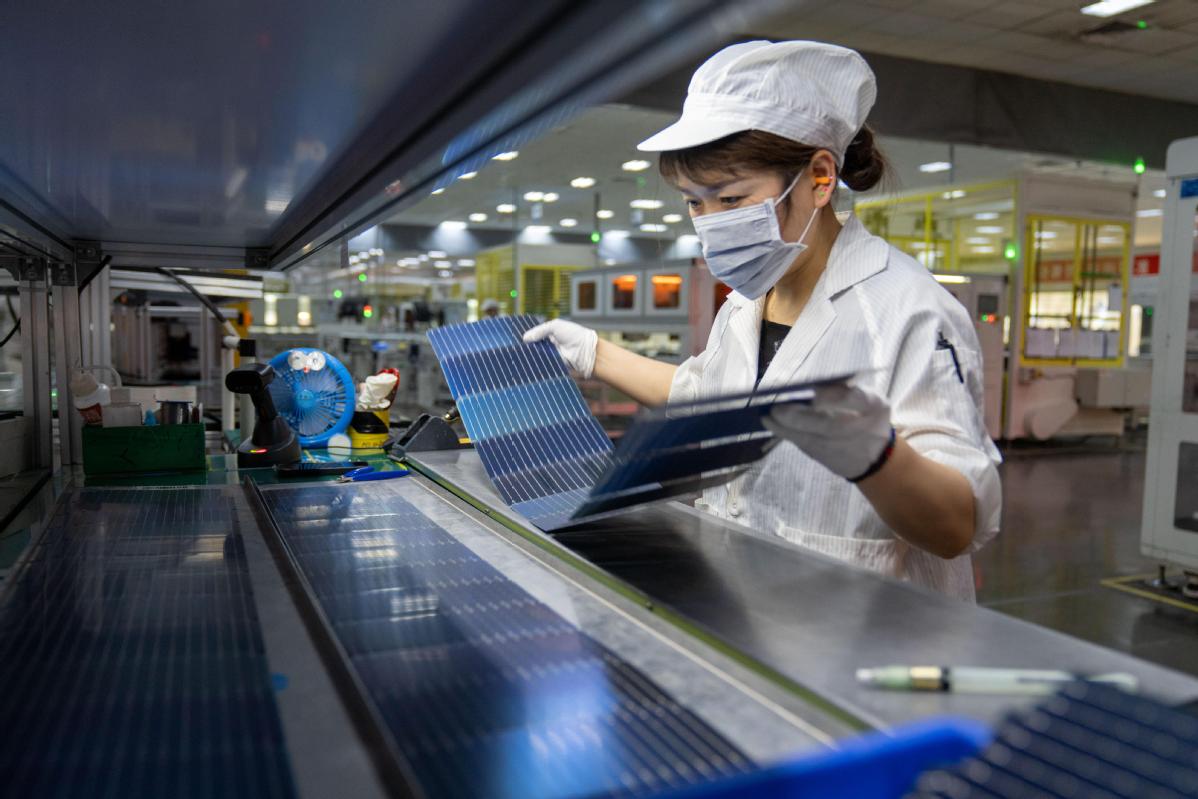
China's new energy industry does not have an "overcapacity" issue, said Zhang Jianhua, head of the National Energy Administration on Thursday.
He called for the international community to uphold fair competition and open collaboration for global green and low-carbon transformation.
Zhang said supply-demand equilibrium is relative, and imbalances are common in market-driven economies. Moderate supply over demand can facilitate technological advancements and cost efficiencies. Solutions mainly lie in market adjustments.
READ MORE: Solar's bright future in powering China's rural areas
He noted the photovoltaics industry is thriving, driven by a surge in production enthusiasm globally.
Zhang said: "Projections by the International Renewable Energy Agency indicated that by 2030, global PV capacity will surpass 5.4 billion kilowatts to meet the goal set by the Paris Agreement, nearly quadrupling the 2023 capacity. China's PV sector, primarily led by private enterprises, displayed intense competition and expansion due to optimistic market expectations," he said.
"However, the industry faces challenges in adopting new technologies and phasing out outdated capacity. While technological progress has accelerated, enterprises are investing in advanced capacity to stay competitive. Simultaneously, the coexistence of old and new capacities during technological transitions has inflated overall industry capacity."
Zhang's remarks came after some Western politicians and media outlets recently claimed that the Chinese new energy industry's "overcapacity" has been causing market distortions abroad by dumping products at low prices.
In May, the US government decided to impose additional tariffs on imports of Chinese solar cells, raising them from 25 percent to 50 percent.
Lin Boqiang, head of the China Institute for Studies in Energy Policy at Xiamen University, said the price advantage of Chinese PV products was due to years of large-scale development and technological iterations, while the additional tariffs are more of a political maneuver rather than economically driven, considering China's direct exports to the US are small.
"They fear that China's PV industry will quickly dominate the global market, leaving little space for them," Lin said.
Latest data from the National Energy Administration showed that from 2013 to 2023, China's wind power's installed capacity has grown from over 76 million kilowatts to over 440 million kilowatts, nearly a fivefold increase, while PV installed capacity has increased from over 19 million kilowatts to over 600 million kilowatts, up over 30 times.
ALSO READ: China to establish coal capacity reserve system by 2027
In 2023, the new installed capacity of renewable energy for power generation exceeded half of the global total, while China's cumulative installed capacity of renewable energy for power generation accounted for nearly 40 percent of the global share.
As China's wind and photovoltaic power capacity exceeded 1.1 billion kilowatts by April, efforts are underway to improve the consumption rate of new energy sources. The NEA addressed the need to expedite the construction of power grid projects, in order to smoothen the power-to-grid connection for new energy sources, optimize power-to-grid connection processes and equip the distribution network with a target total capacity of around 500 million kilowatts for distributed new energy sources by 2025.
Energy consumption saw substantial growth in the past decade. NEA data showed the proportion of consumption of nonfossil energy like wind power, solar power, hydropower, nuclear power and biomass has increased from 10.2 percent to 17.9 percent, a cumulative increase of 7.7 percentage points.


